
With so much competition in the marketplace, it’s becoming increasingly important for your business to differentiate itself from your peers if you want to stand out.
One of the most effective ways to do this is to focus on creating products your customers love and turning them into brand advocates.
Brand advocates and word-of-mouth marketing are worth their weight in gold. They’re the fastest way to build brand loyalty.
A product-led strategy uses a product-first and community-based approach to increase customer engagement and build profitable customer relationships.
In this post, we’ll walk through why this type of business strategy matters. We’ll also discuss how to create brand advocates who’ll talk about your company with their friends and colleagues for years to come.
Let’s dive in.
Effortlessly export your Google Docs to WordPress with just 1-click.
Get Started Today
A product-led growth strategy focuses on the product, not marketing or selling it. It’s a customer-centric approach to growth and innovation. You focus on how to improve your products and services from the inside out.
Product-led growth fundamentally differs from traditional approaches because it prioritizes long-term value over short-term financial gain. It doesn’t involve spending money on advertising campaigns or other external revenue sources.
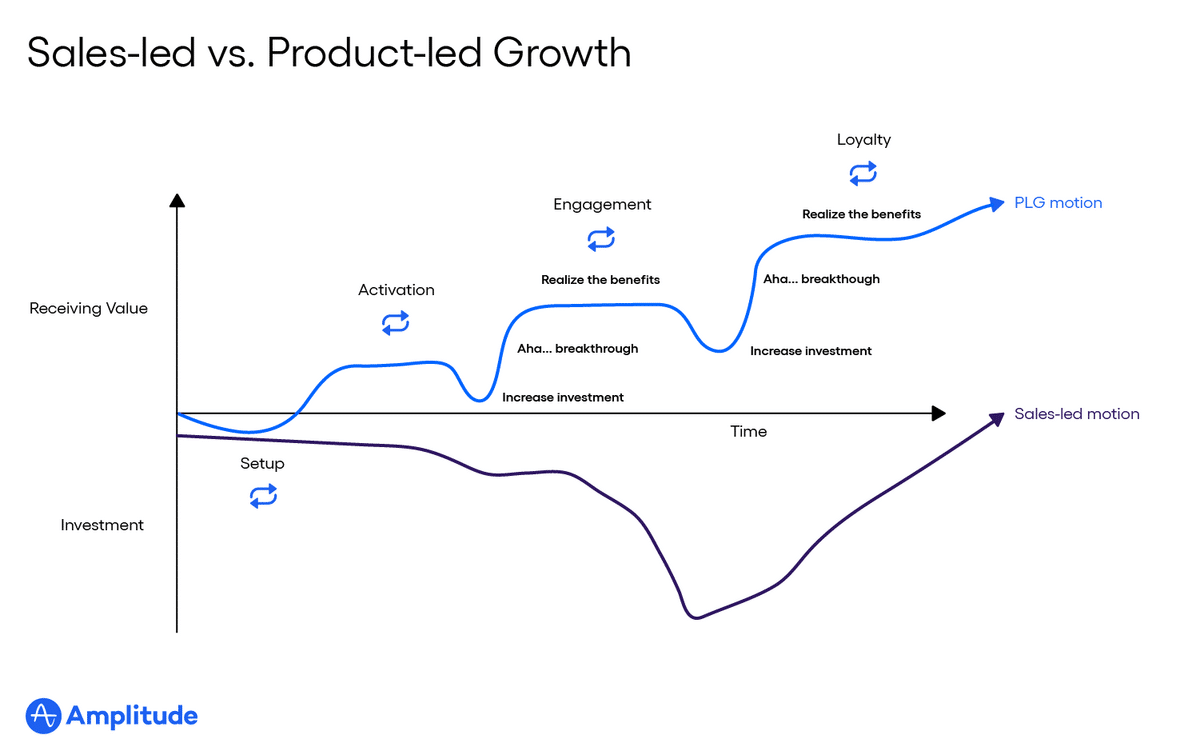
Instead, product-led businesses focus on building great products, not selling them. After all, great products sell themselves. When creating a roadmap plan for a product-led business, the focus should be on continuously refining the product, and prioritizing features and improvements based on user feedback.
When your customers try your product, they’ll experience its benefits firsthand. As a result, they don’t need persuasion by a sales pitch.
To make these trials even more effective, utilize customer segmentation to personalize the onboarding experience and highlight features that appeal to specific groups. For example, a music software company might offer different trial content for DJs and producers.
Product-based companies might offer a free trial or subscription instead of marketing or sales. This way, people can see the product’s value and benefits without paying anything upfront. By exploring alternatives to PagerDuty, people can understand the pros and cons of each software tool and make up their minds about which one they will choose as a result.
A free profile picture maker can create high-quality pictures in a few clicks. The proof is in the product. The free product is easy to use and creates beautiful profile pictures in seconds. You can even take it further with AI-powered tools, such as business name generators.
You don’t need any salesmanship experience or extensive digital marketing for this product. Active users can try the product for themselves and understand the value of the product features on their behalf.
Then, once they love the product themselves, they spread the word through social media, reviews, testimonials, and word-of-mouth. This is key.
Why? Because 78% of people talk about their favorite experiences with friends and family at least once a week. And word-of-mouth recommendations influence 90% of all buying decisions.
When using a product-led growth model, you must consider the customer journey. The stages are:
Engagement with your customers is essential during acquisition and retention, especially during retention. The most successful companies constantly engage with their customers, often. You can leverage a user journey analytics tool to gain insights into their behavior and preferences.
They implement feedback to improve their products.
The popularity of product-led growth is on the rise. According to Kiernan Flanagan, former SVP of Marketing at HubSpot, the future belongs to product-led companies.

There are many reasons to consider this approach. Here are some of them:
A product-led approach is customer-centric. It focuses on understanding what customers want and need, then builds products to meet those needs.
By focusing on solving their problems, you can direct your efforts to make them happy.
Today, research shows that 67% of customers prefer self-service to interacting with a customer service representative. And a whopping 91% would use an online knowledge base if it were available and tailored to their needs. In this landscape, the importance of an efficient contact center cannot be overstated. When considering a product-led strategy, it’s essential to conduct a thorough contact center comparison to ensure that your customer support infrastructure aligns with the self-service preferences of your customers.
Happy customers equal loyal customers. And loyal customers become your best brand ambassadors.
Creating products that deliver value to your customers can build strong customer relationships and increase word-of-mouth referrals.
Word of mouth is one of the most powerful forms of marketing, resulting in sales 5x more than paid media impressions. And according to a report by LXA, people are 90% more likely to trust and buy from a brand recommended by a friend.
A well-designed product can also drive additional sales through complementary products or services. Sales automation can further augment revenue and profitability by automating tasks such as lead generation, sales forecasting, and sales opportunity management. By streamlining these processes, businesses can focus their efforts on nurturing customer relationships and building brand loyalty.
A product-led strategy focuses on creating solutions for potential customers’ problems rather than just trying to sell them something.
When you give them a solution, and they see firsthand how it works for them, they’ll be more likely to buy from you again in the future. If your product is a restaurant payroll software, and if it’s built with the restaurant managers and staff in mind, using it once will be enough for them to continue the partnership. They’ll be able to pinpoint how they benefit from it and how it saves time and other valuable resources.
Because product-led businesses funnel most resources into product development, they can spend less on sales or marketing teams. This strategy lets them continue to grow and see a faster return on their investment in customer acquisition.
Whether you decide to eventually sell your company or stay focused on profitability, you’ll want to ensure your customer acquisition cost (CAC) is lower than your monthly recurring revenue (MRR).
Fortunately, a product-led strategy lends itself perfectly to this goal.
Lastly, investing in strategy consulting can help optimize and improve your product-led approach.
These companies took product-led growth strategies and applied them flawlessly. Let’s look at how each company’s approach brought them notoriety and brought us the products we can’t live without.
Slack is one of the greatest examples of customer-centric product-led growth strategy success stories. Everyone uses Slack now, but it was just an idea a handful of years ago.
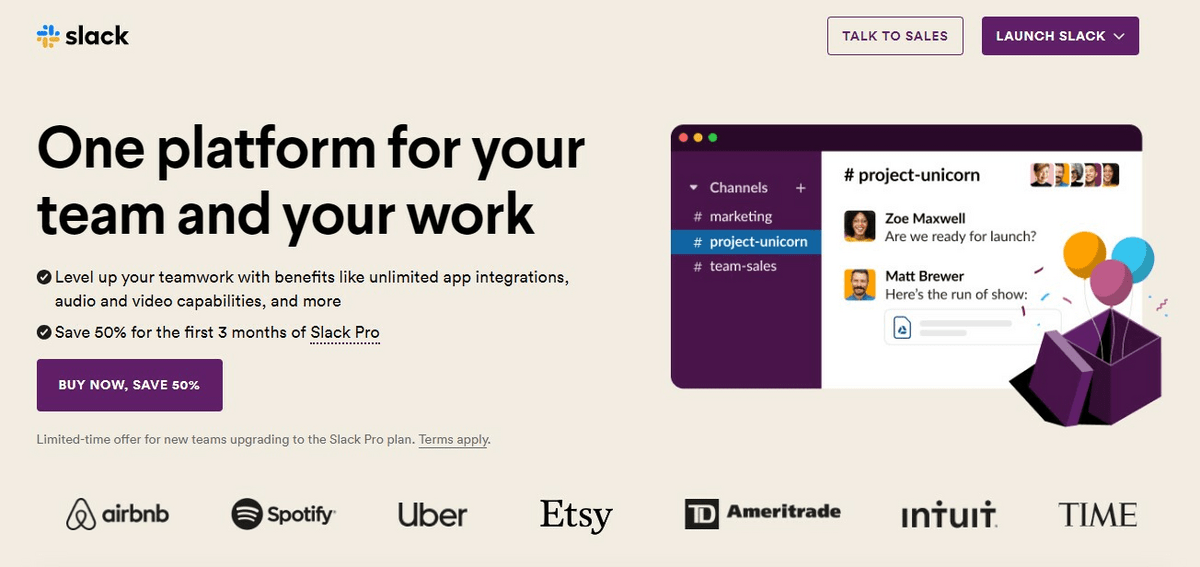
The product teams all but guaranteed their success by internally testing the app long-term before launching it publicly. They tried to predict user behavior and prevent potential issues.
By using this approach, they fine-tuned Slack into the mega-success it became.
Now used by two-thirds of the Fortune 100 (and just about everyone else), Slack is a household name synonymous with instant messaging.
It accomplished its goal of replacing internal business emails by over 70%, which we all appreciate.
It’s a perfect example of how product-led should work. They developed an amazing product, tested it as users, and fine-tuned it before launch. Then, they provided free access to everyone.
If you love it and need additional features or upgraded access, you can upgrade for a reasonable monthly price.
And, seriously, who doesn’t love Slack?
Even for those malcontent few, Slack wants to know how to improve its product to meet their needs. The customer success team at Slack is constantly receiving and implementing feedback because they genuinely care.
From freelancers to the Fortune 100, Slack has become a must-have tool for every professional. Theirs is a success story to follow.
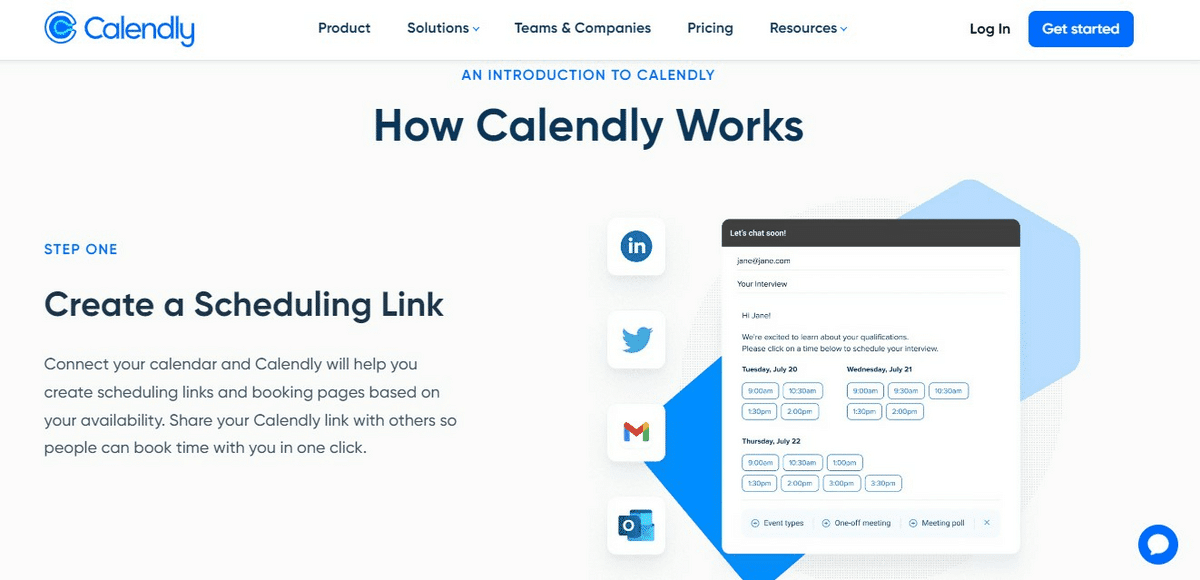
Calendly offers a Freemium service for users to schedule appointments, which they can upgrade later. But it’s far from just an appointment scheduling tool.
It goes beyond by offering integrations with other tools like CRMs and solutions for every department and team, including sales, marketing, and IT.
From simple appointments to enterprise-level services like team meetings and analytics, Calendly provides solutions for every business size.
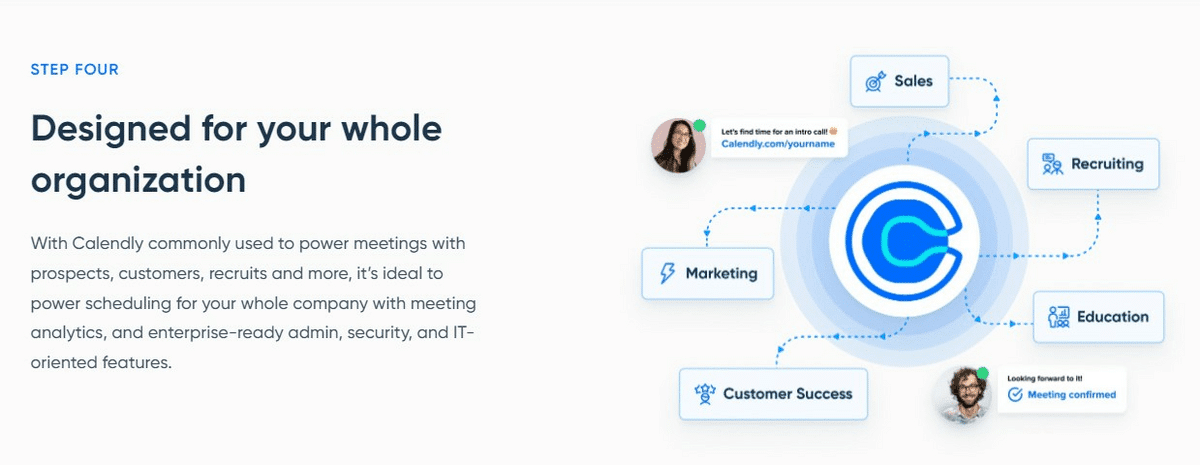
This SaaS unicorn has fewer than 250 users but is valued at over $3 billion and has earned $100 million in revenue! Talk about an optimized product-led growth model.
With its valuable offer paired with a service that connects users with potential prospects, Calendly’s users did virtually all the marketing for the company.
For those exploring options beyond Calendly, there are several Calendly alternatives worth considering. These include scheduling tools like Doodle, Bookly, and OnceHub, each with its unique features and strengths. Exploring these alternatives can provide a comprehensive view of the scheduling tool landscape and help in making informed decisions tailored to specific business needs.
You can’t talk about PLG without mentioning Zoom.
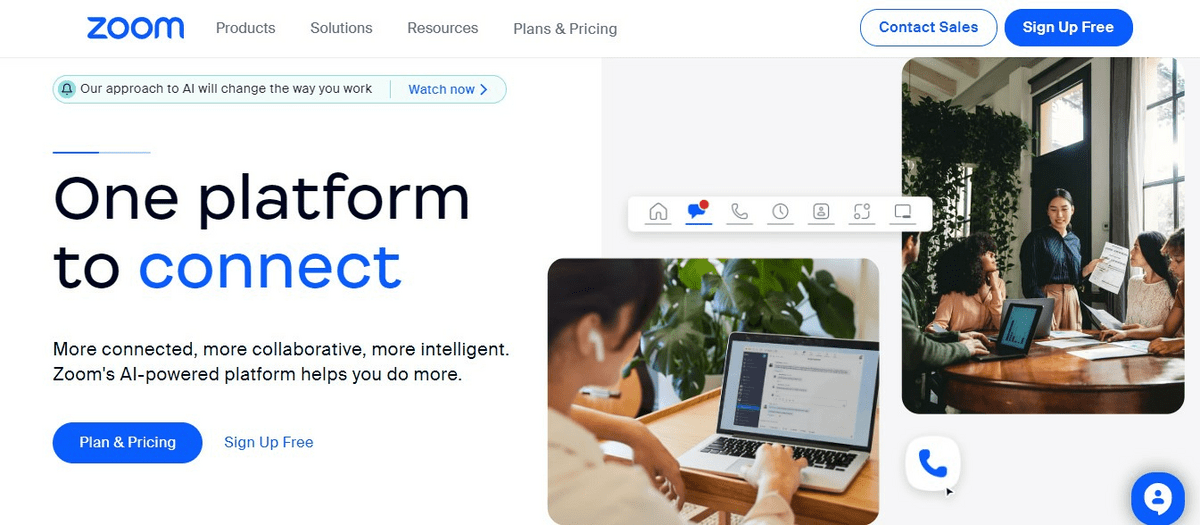
Zoom launched in 2011, but chances are you didn’t use it until 2019 or 2020.
Why? The pandemic forced us all to shift into hybrid or remote work situations where video conferencing became the new norm. And Zoom quickly became king.
Despite the influence of the pandemic, Zoom deserves credit for its incredible evolution and rate of response in the face of monumental challenges.
It faced unprecedented demands in light of global quarantines, but it met them head-on and developed one of the best video conferencing tools to date.
As a result, Zoom became an almost overnight success, and its value is a staggering $20 billion.

Critically, Zoom’s mission and values center on happiness – delivering it to its customers and employees. This customer-centric approach continues to contribute to Zoom’s amazing popularity.

Product-led growth consists of a 3-part process. This growth tactic allows you to land and expand customers quickly and effectively by following three simple steps:
Product-led strategies show the value of your product before selling it, like offering free trials or using a freemium model. This way, potential customers can try your product before buying it.
For instance, let’s say you sell software for site monitoring. Give business owners limited access to your software so they can test it before investing.
These low-touch acquisition methods can significantly increase your lead volume and qualify opportunities organically by allowing users to test whether they like the features and will eventually pay for your solution.
Once your leads are in the door, your product should sell itself. But don’t stop there.
Start low-commitment contracts with potential customers to expand as they continue using your product. If you have potential cross-sell or upsell opportunities, optimize them.
Sweetwater, a marketplace focused on musical instruments, equipment, and other accessories, is a clear-cut example of how a brand can use a product-led strategy to win customers.
They have designed a website community that allows users to choose from the best instruments and accessories while reading reviews, answering questions, and recommending products to other users. Hence, they get the best options for their gear and setup.
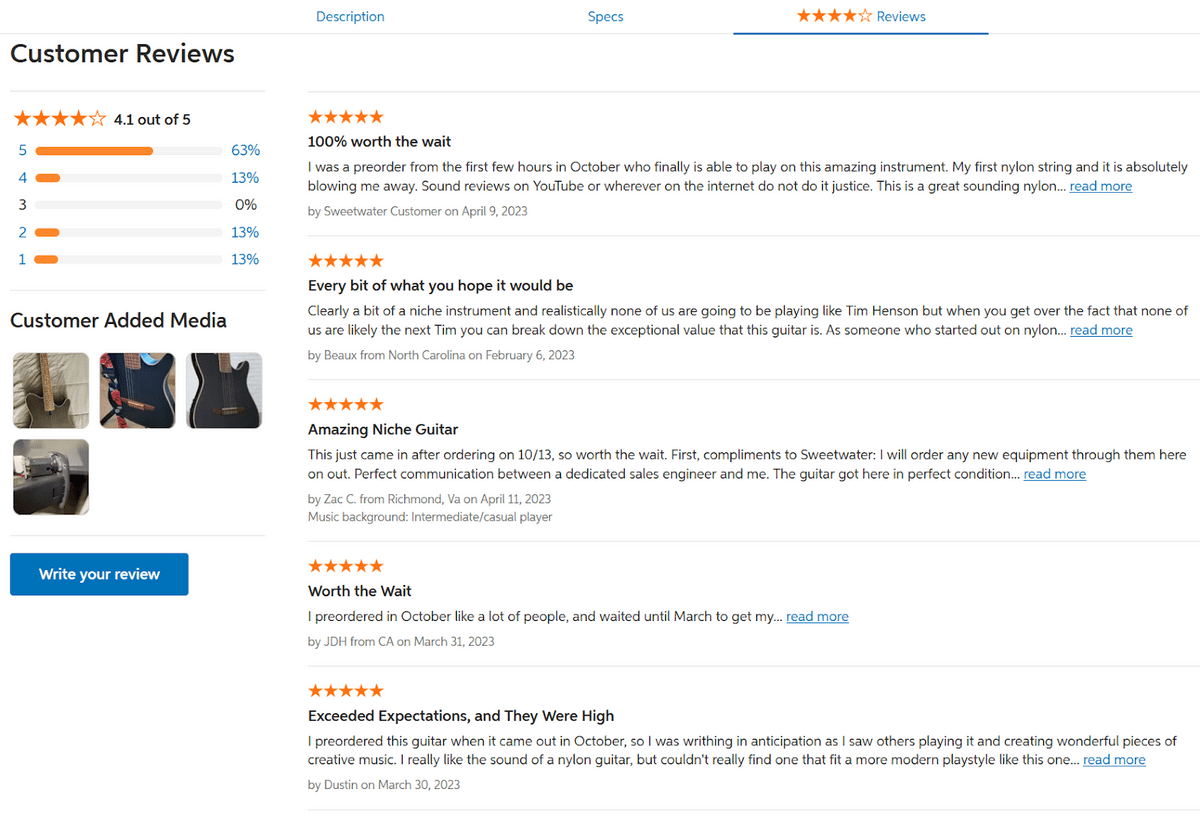
Community development is a way to create loyal customers willing to tell others about your product and help answer questions, turning more leads into sales.
Not only are these communities completely free, but they’re also authentic, which creates trust among your customers and encourages future engagement.
At this stage, you have established a robust customer base. Job done, right?
Not yet. The last piece to the puzzle is keeping your customer base engaged for years to come. If you can continue to upsell to them, that’s even better.
To upsell to your customers, you should focus on releasing new features that meet your customer’s wants and needs. Using data-driven customer success, you can leverage customer feedback to deliver the solutions they seek.
High-quality test data generation is critical to the use and expansion process because developers rely on accurate data for performance testing, adoption, and improving the customer experience.
In order to achieve this, make sure to have data extraction techniques in place, as they play a crucial role in gathering relevant information from various sources.
Don’t forget to use customer feedback tools, such as surveys or feedback forms, in-app testing environments, and beta phases to optimize the customer experience and test the adoption of new functionality before a full launch. Remember Slack?
Once your new features are ready, notify your existing customers using email outreach or push notifications about the recent changes. A simple notification can ignite a spark to re-engage with your product and get them to come back for more.
With these simple steps, your organization can implement a product-led approach to building better products and engaging with customers to benefit your business goals.
By focusing on the end-user experience and developing products that resonate with your target audience, you can quickly increase your customer base and build brand advocates.
Selling products to customers is one of the most common business models. However, by putting your customer at the center of the journey to increase customer engagement, you can generate strong organic revenue growth for long-term business success.